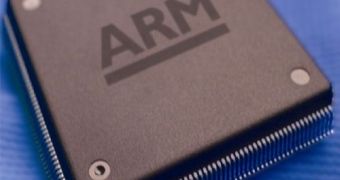When it comes to energy efficiency and performance, ARM-based and x86 chips are as different as they can be, but analysts think that, in the future, the gap between these two architectures will narrow, becoming almost inexistent in a few years time.
This change will be fueled by the rise in popularity of high-performance mobile devices, such as smartphones and tablets, forcing x86 chip designers to come with ever more energy efficient solutions if they want to challenge ARM-based SoCs.
At the same time, ARM will have to deliver more powerful chip designs in order to keep up with the requirements of software developers, which always ask for more performance from mobile hardware manufacturers.
For example, Google's upcoming Android 3.0 OS (code named Honeycomb) requires a dual-core processor for it to work, and future versions may come with even higher system requirements.
This effectively means that both sides will have to change their game in order to keep up with the mobile world, according to analysts.
“Both Intel and ARM have been working hard to address their weaker areas and there will be a point in the next few years when the performance/power efficiency of these technologies will be equal.
At that point the competition in the market should be immense. x86 and MIPS cores have entered the market in 2011, and are forecast to grow to around 18% of the market by 2016,” said Peter Cooney, the principal analyst at ABI Research.
Right now, chips based on the ARM architecture are used in most smartphones, tablets, and other types of mobile devices while x86 processors dominate the computer space.
However, things are set to change in the future as the energy efficiency and performance line between the two architectures will become ever more blurry, both sides bringing ever more advanced solutions into the game. (via Xbit Labs)

 14 DAY TRIAL //
14 DAY TRIAL //